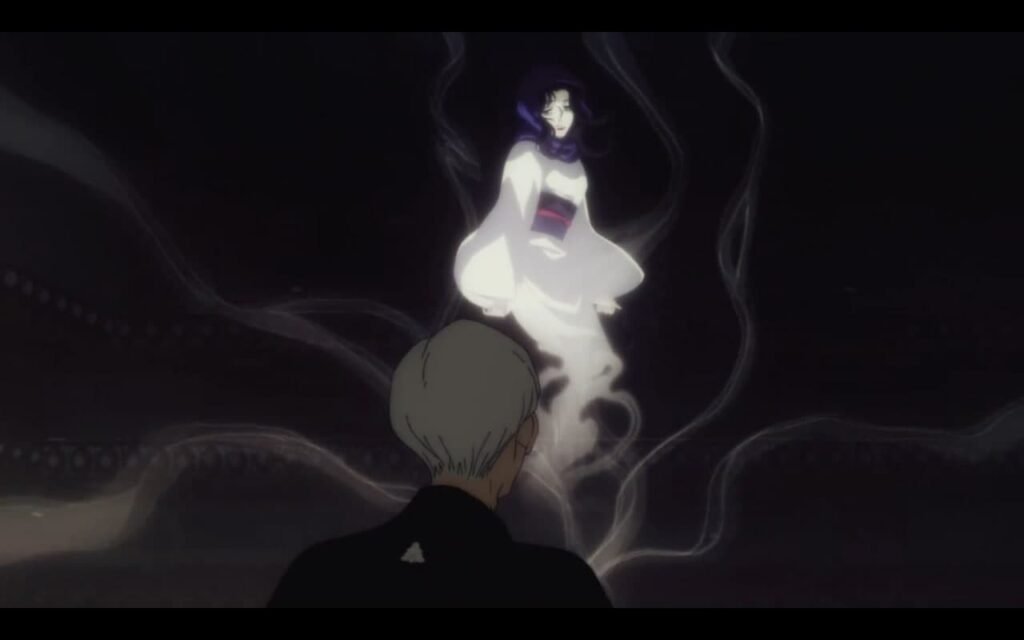In Japan, summer is the season of “Kaidan”(怪談)which means ghost stories, and it’s the time when horror movies are released and TV broadcast shows about spiritual phenomena. We often see its impact on anime also. Gathering around, telling scary stories, and having a test of courage is a common trope in anime, especially in a slice of life anime.
There are many ways you can cool yourself in summer, you can sit in an air-conditioner or eat ice cream, but in Japan, it is a different case. In Japan, homes don’t usually have a central cooling unit, and even if the air conditioner is there, it is usually in one room. It is a common belief in Japan that in summer, ghost stories can induce chills and goosebumps that can cool you down. Konata implements this idea in Lucky Star when she tells the group a scary story on the beach.
Even popular anime like “Higurashi”, “Hotarubi no Mori e” or “Anohana” takes place in summer. Anime and stories of spirits and ghosts go hand in hand. But what are the reasons behind summer ghost stories and related tropes being so popular? Let’s take a look.

The connection between summer and spine-chilling tales has its inception in the Buddhist tradition. Every year during mid-August families celebrate the Buddhist festival of the dead, called Obon. It is believed that the boundary between the physical and spiritual world grows thin during this time and spirits of the dead can visit their families.
Welcoming fires are lit, and eggplants and cucumbers are made to resemble ox and horse so that spirits can come and go. At the same time, bon-kyogen plays are held, which act as a form of requiem (a Mass for the repose of the souls of the dead) for the repose of ghosts unable to rest in peace. Obon is the time when people remember their ancestors and lost loved ones, and taking pity on unhappy ghosts.
Another reason for the popularity of summer ghost stories lies in Japanese history. Even though anime is ubiquitous nowadays, rakugo and kabuki were the major sources of entertainment in the early days, and both used summer ghost stories as the base for their dramas. Kabuki performances were called “Suzumi Shibai” which translates to “cool plays”. It is said that kabuki stars used to take a vacation in summer because theaters didn’t have adequate cooling.
At the same time, it was easier for less experienced actors to perform ghost stories than traditional plays. It was because of these cultural reasons summer ghost stories became popular in Japan. And they are relevant even in modern times.
Another major anime trope is “Kimodameshi”, also known as the “test of courage”. Pairs of teenagers, couples a lot of time, goes on a scary course at night. The path is designed the scare the participants. Actors come out in ghost costumes to scare the participants. Kimodameshi is quite popular in anime, as it gives characters a chance to interact and often cling to each other. It is often paired with summer vacation and school festival arcs. Popular anime like K-on, My Hero Academia have featured this arc.

One of the more traditional ways of telling these stories was, by lighting 100 candles and people would take turns in telling stories. As each story is finished, the storyteller will put out a candle. Slowly the whole place will turn dark and it will go on until someone finally loses their nerve. Most of these stories featured wronged women who turned into vengeance-seeking ghosts. These stories were more of a representation of time as women didn’t have much power against men, but after death, they get their chance.
The horror storytelling is rooted in modern anime culture also. One of the best examples of this is “Shōwa Genroku Rakugo Shinjū”. In the story, our protagonist Yakumo is one of the famous rakugo players. He often tells ghost stories on the rakugo stage, and a mysterious atmosphere descends, every time he tells a scary story.
One of the popular examples of a summer ghost story is the story of Oiwa who was tricked by her husband, Iemon. She uses a poisonous cream that destroys her face and eventually kills her. But before that, she decides to take vengeance on her husband. Subsequently, Iemon is haunted by visions of Oiwa’s destroyed face. Lemon flees to the mountain where he descends into madness and can no longer tell the difference between what is real and what is a dream.
The story became quite popular in kabuki play during the Edo era. The story is retold many times, from plays, movies to J-drama.

There are various other popular summer ghost stories also, from the story of Okiku, an innocent girl who got tricked by the samurai, to Botan Dōrō which is a romance horror.
Summer ghost stories and spirits are a big part of Japanese culture, people find both horror and comfort in these stories. There are events organized around it, be it welcoming spirits of people who are long gone or as a rite of passage to adulthood by having a test of courage. And same tropes are an integral part of the anime and manga we consume.
So, what kind of horror stories do you like or want to see in anime or manga? Tell us in the comment section.
